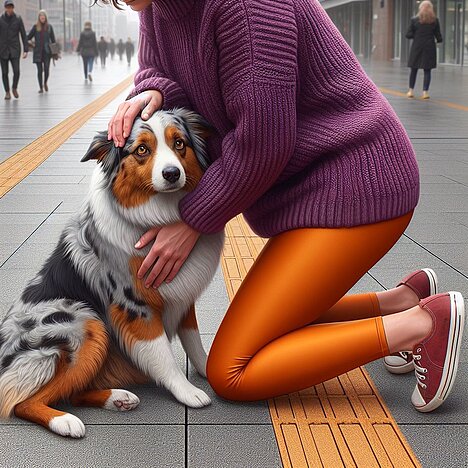Fear

Fear is a natural reaction to threats or dangers that both humans and animals can experience. However, in dogs, fear can lead to serious problems, such as aggression, destruction or flight behavior. In this article, you'll learn how to recognize and treat anxiety in dogs to help your four-legged friend live a happy and relaxed life.
What are the causes of anxiety in dogs?
Anxiety in dogs can have a number of causes, which can vary depending on the dog and the situation. Some common triggers are:
- Lack of socialization: if a dog does not have enough exposure to different people, animals, and environments in its first few weeks of life, it may later develop a fear of new or unknown things.
- Traumatic experiences: If a dog has had negative experiences with people, animals or situations, he may associate them with fear and try to avoid or fight them.
- Genetic predisposition: Some dog breeds are more prone to anxiety than others, for example Border Collies, Australian Shepherds, or Weimaraners. The individual dog's personality and temperament also play a role.
- Illness or pain: if a dog is physically unwell or ill, it may react irritably or anxiously. Age can also play a role, as older dogs often suffer from cognitive decline or vision and hearing loss.
How can you recognize anxiety in dogs?
Anxiety in dogs can manifest itself in a number of ways, which can vary depending on the dog and the situation. Some common signs include:
- Body language: an anxious dog will often show a crouched posture, tucked ears, tucked tail or lowered head. He may also shake, pant, yawn or lick his chaps.
- Behavior: A fearful dog may try to hide, flee, or bark. He may also become aggressive and snap or bite. Or he may calm himself by scratching, licking or chewing.
- vocalizations: An anxious dog may yip, whine, or whimper. He may also growl or bark.
How can you treat anxiety in dogs?
Anxiety in dogs is not an unchangeable condition, but can be improved with patience and training. To do this, you should follow these steps:
- Identify the triggers: observe your dog closely and find out what makes him anxious. Try to understand the situation from his perspective and not judge him.
- Avoid overwhelm: Don't expose your dog to unnecessarily stressful situations that can increase his anxiety. Rather, take small steps and slowly work your way up to the triggers.
- Reward positive behavior: Use positive reinforcement to show your dog that he has nothing to fear. Praise him verbally or with treats when he stays calm and relaxed or approaches the trigger.
- Seek professional help: If your dog's anxiety is severe or affecting his well-being, you should seek advice from a veterinarian or dog trainer. They can give you individualized tips or recommend medication.
Anxiety in dogs is a common problem that can have many causes and symptoms. With loving and consistent training, you can help your dog overcome his fear and live a happy and relaxed life.
The authors assume that a veterinarian should be consulted if an animal is ill and that medication should only be taken after consultation with a doctor or pharmacist. Only an individual examination can lead to a diagnosis and treatment decision.
We help you find the nearest vet → This way